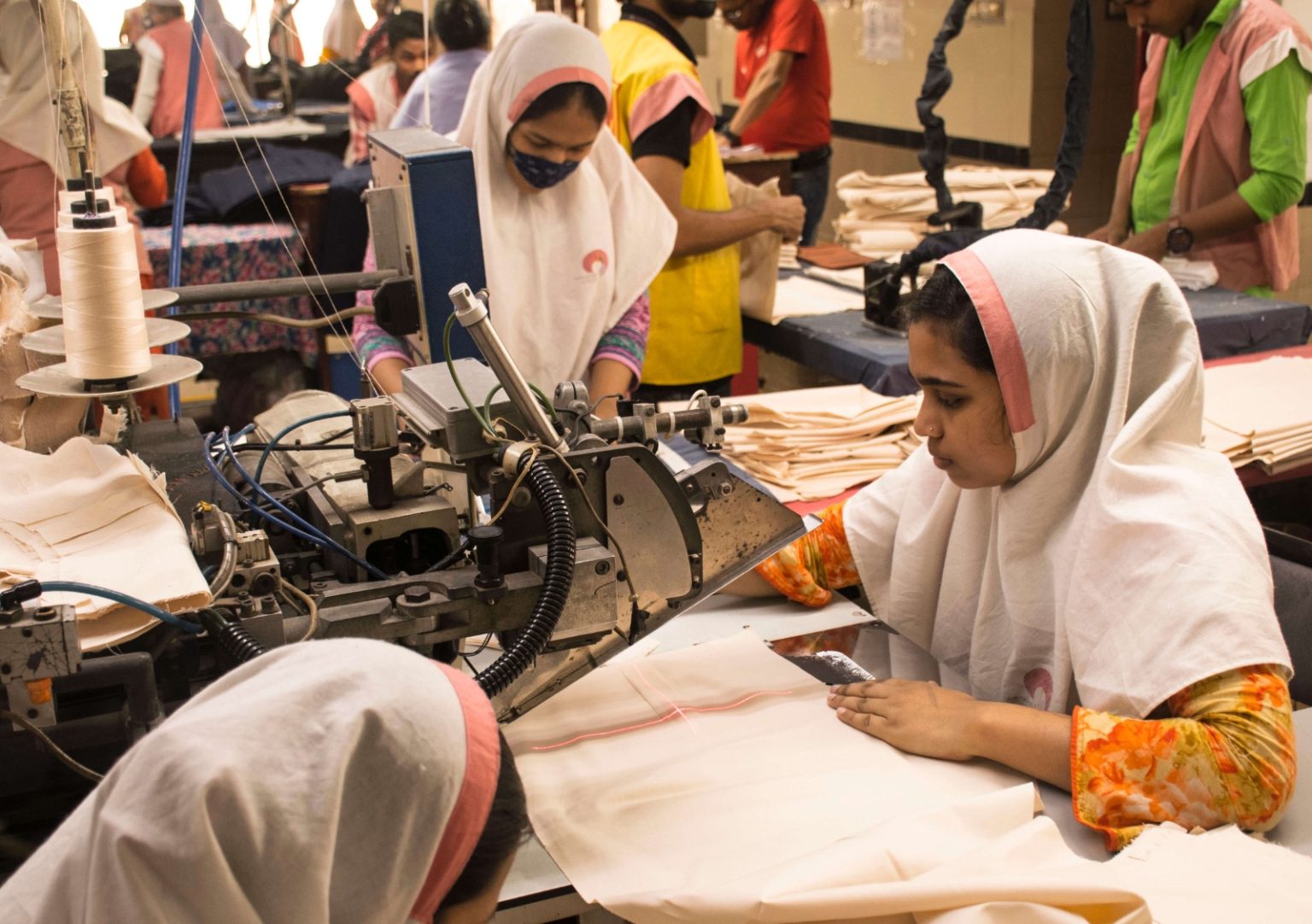The 20% reciprocal tariff imposed by the Trump administration on Bangladeshi exports, effective from 1 August—reduced from an initially proposed 37%—presents both short-term gains and long-term risks for Bangladesh’s export-dependent economy, particularly the apparel sector.
While the revised rate improves competitiveness against regional rivals like India and Vietnam, long-term resilience will require strategic economic diversification. Despite the tariff, Bangladesh remains relatively well positioned. India faces a 25% tariff plus penalties linked to Russian trade, while Vietnam, though at parity with Bangladesh at 20%, also faces a 40% levy on goods the US considers illegally transshipped. China’s 30% tariff makes it even less attractive for US buyers.
Mohammad Hatem, president of the Bangladesh Knitwear Manufacturers and Exporters Association, notes that rising US tariffs on China could shift sourcing to Bangladesh, supported by its low-cost labour.
With a 9% share of the US apparel market and over $8 billion in annual exports to the US, Bangladesh stands to gain from sourcing shifts away from higher-tariff countries like Thailand, where rates reach 36%. The tariff reduction is also a diplomatic success, with interim leader Muhammad Yunus publicly thanking President Trump—potentially paving the way for stronger bilateral ties. The more moderate rate could also attract foreign investment as brands seek alternatives to China.
However, significant challenges remain. The 20% tariff still raises the cost of Bangladeshi goods in the US, possibly reducing demand as retailers like Walmart decide whether to absorb costs or pass them on to consumers. Hatem warns that rising global trade costs, domestic inflation, and political instability could undermine potential gains.
Geopolitical alignment further complicates the outlook. economist Khondaker Golam Moazzem, research director at the Centre for Policy Dialogue, points out that US allies may receive preferential trade terms, potentially sidelining Bangladesh if it remains outside key strategic alliances. With over 80% of exports tied to apparel, Bangladesh is more exposed to market fluctuations than Vietnam, which also exports electronics and footwear, or India, which has a more diversified export base and stronger domestic demand.
While Bangladesh enjoys tariff parity with Vietnam and a lower rate than India, both competitors are more resilient. India’s diverse exports include pharmaceuticals and IT, and its large internal market helps absorb external shocks. Vietnam has a broader industrial base and strong FDI inflows.
Vietnam’s transshipment penalties may benefit compliant exporters like Bangladesh. India’s strained US relations over Russian trade increase uncertainty, while Bangladesh’s neutral diplomacy has helped maintain trade access.
Although Bangladesh may gain apparel market share in the short term, its heavy reliance on a single sector increases vulnerability to global demand shifts. Diversifying products and markets is crucial to ensuring long-term growth.
Bangladesh should prioritise high-value textiles such as technical fabrics, sustainable materials, and home furnishings to align with Western consumer trends. The leather and footwear sectors hold promise, particularly if Bangladesh can emulate Vietnam’s export growth. Light electronics and mobile assembly offer additional potential, especially as firms look to move production out of China. Pharmaceuticals are another growth area; companies like Square Pharmaceuticals already export to over 30 countries.
To support these sectors, Bangladesh must invest in skills training, technical education, and automation. Partnerships with international firms can facilitate technology transfers, as seen in Vietnam’s collaboration with Samsung. Bangladesh should also position itself as a sustainable manufacturing hub. Investment in renewable energy would reduce production costs and align with global climate goals.
Market diversification is equally critical. Bangladesh can strengthen trade with China, India, and ASEAN countries. The Middle East and Africa—particularly the UAE, Saudi Arabia, and Nigeria—are growing markets for affordable garments.
Bangladesh must also maximise its duty-free access to the EU under the Everything But Arms (EBA) initiative through 2029 and prepare for a smooth transition to the GSP+ scheme. The EU accounts for roughly half of Bangladesh’s apparel exports, or $20 billion annually.


